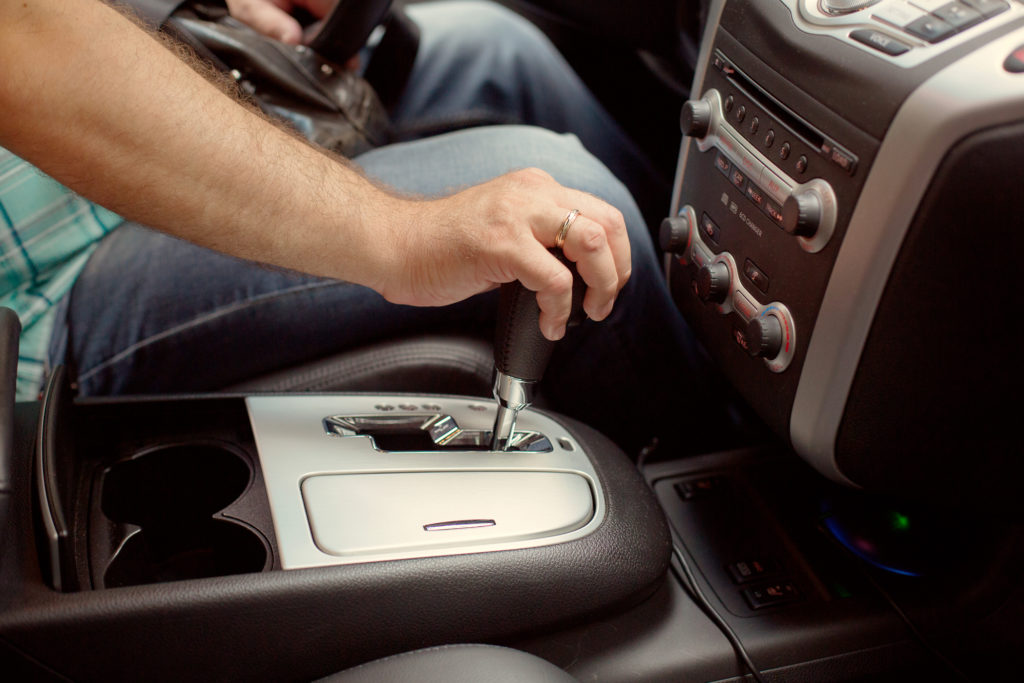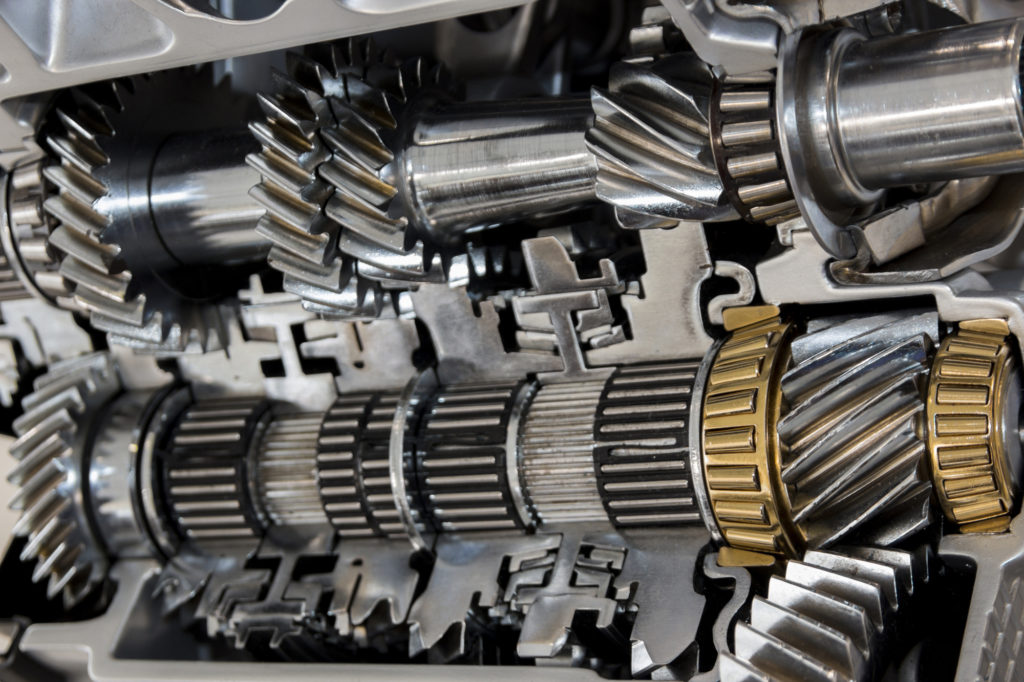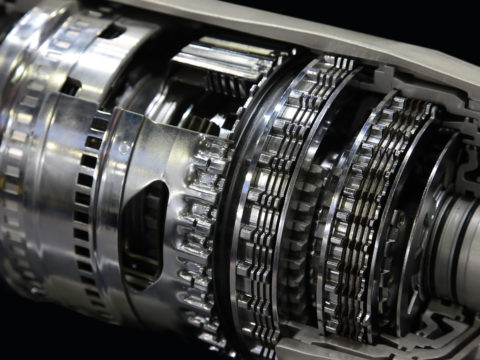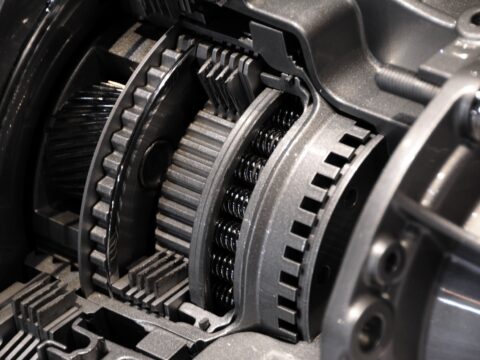A transmission control module is an electrical control unit or computer that is used to control electronic automatic transmissions. Transmission control modules, or TCMs, use sensors in the vehicle and data from the engine control unit to determine when to shift gears.

Contents
Car TCM Overview
The TCM allows your vehicle to determine the best time to shift to maximize fuel economy, shift quality, and reduce wear and tear. For a more detailed explanation of how TCMs work, check out this link.
What Does The Transmission Control Module Do?
The transmission control module determines the best time for your vehicle to change gears. Based on data it receives from the rest of the vehicle, the TCM tells your transmission when to upshift or downshift.
What Does A Transmission Control Module Look Like?
Transmission control modules vary in size and shape depending on the make and model of the vehicle you drive. Generally, they look like small metallic or plastic external hard drives, with a data port on one side. Here’s an example of a transmission control module for a Mazda 3. Generally, they are flat, square, metallic, or plastic and have ridged edges.
Where Is the TCM Located in the Car?
The location of the transmission control module will also vary from vehicle to vehicle. However, you can generally expect it to be located somewhere in, on, or close to the engine because it needs to be connected to the vehicle’s computer via its data port. The TCM is typically found on or near the transmission itself.
How to Check and Test a TCM
The best way to check and test a transmission control module is to observe how your vehicle is driving. If your car is having problems, the TCM could be involved. Here is a list of possible symptoms that could indicate that your transmission control module has gone bad.
What Are the Symptoms of a Bad Transmission Control Module?
What are some of the things that can go wrong with a TCM? Let’s discuss.
Check Engine Light Is On
The check engine light indicates a problem with your vehicle, including transmission control module problems. If the check engine light is on, take your vehicle to your local mechanic so they can run a diagnostic scan.
Erratic Shifting
If your vehicle shifts when you did not intend it to, or shifts into gears that you did not want it to, you may very well have problems with your transmission control module. For example, if you are driving at a low speed and your vehicle suddenly shifts into neutral for no reason, there could be something wrong with your TCM.
Delayed Shifting
If your vehicle is delayed when shifting, you could certainly have a problem with the transmission control module. If you are accelerating and your engine is revved up high, but it stays there, and your transmission doesn’t shift right away, that could mean there’s something wrong with your TCM.
Stuck In One Gear
If your vehicle gets stuck in one gear and won’t shift regardless of how much you accelerate or decelerate, your TCM could be faulty, which typically means your vehicle is stuck in neutral or first gear. If this is the case, you should have your vehicle repaired as soon as possible.
Problems Upshifting or Downshifting
Because the transmission control module is supposed to determine the best time to shift gears and tell the transmission when to shift, if that isn’t happening, there could be something wrong with the TCM. To understand more about how automatic transmissions should work, check out this article.
What Causes a Transmission Control Module to Fail?
What can cause a TCM to stop functioning properly? Let’s discuss.
General Wear and Tear From Use and Age
The older your vehicle is and the more mileage you put on it, the more things begin to wear out and fail. Weather, road conditions, corrosive foreign substances, and lack of maintenance contribute to wear and tear. The longer you have your car, the more things will degrade and fail.
Heat From Engine
The transmission control module is a computer made up of electronic parts and therefore is vulnerable to damage from heat. Heat is never good for electronics, and this includes TCMs. Your TCM’s metallic and plastic encasing is designed to protect it against heat, but this can fail.
Bad Soldering in TCM Circuit Board
If the circuitry of the transmission control module was not soldered correctly, the TCM could fail prematurely. As with any such problem, if your vehicle is brand new or still under warranty, you could ask the manufacturer to pay for fixing the problem.
Faulty Wiring From TCM to Other Control Modules
Faulty wiring between the TCM and other vehicle control modules can cause the TCM to short, meaning it was overloaded and burnt out. Vehicle electronics systems are very sensitive, and an overload of voltage or amperage can certainly cause components of this type to fail. Keep an eye out for any frayed, decayed, or severed wires around the TCM.
Vibration
Vibration isn’t good for electronics either, and cars vibrate a lot. The engine itself creates vibration and increases as speed and RPMs increase. Bumps in the road cause your vehicle to vibrate. This scholarly article discusses why vibration is so bad for the TCM and its bracket.

How to Replace a Bad Transmission Control Module
Typically, you can’t fix transmission control modules. If they’re faulty, they simply need to be replaced. If the TCM is the problem, you will need a new TCM.
What You Need
Depending on your vehicle, the TCM may be easy to reach, and you can remove it by hand; for others, you may need a screwdriver, socket wrenches, and a towel to wipe off any debris.
Buy the Correct TCM
Make sure you purchase the correct transmission control module for the year, make, and model of your vehicle. So, if you drive a 2017 Honda Accord, you shouldn’t buy a TCM for a 2009 Chevy Silverado. TCMs are not universal, one-size-fits-all parts; please buy the one that fits your vehicle.
Open the Hood and Locate Your TCM
As was mentioned above, your transmission control module will likely be on or very near the transmission. It will have wiring attached to its data port which connects it to the engine control module.
Remove the Old TCM
Remove the old transmission control module by unscrewing any bolts or screws that hold it in place or by simply lifting the plastic tab that holds it in place in some vehicles. Remove the wire attached to the TCM’s data port. Don’t lose those bolts or screws because you’ll need them to install the new TCM.
Install New TCM
Install the new transmission control module by doing the opposite of what you did to remove the old one. You should use the same bolts and screws and ensure they are tight and snug to install correctly. Attach the wiring to the data port.
How Much Does It Cost to Replace a Transmission Control Module?
If you do the work yourself, the only cost involved will be the cost of the new transmission control module itself. Depending on the make and model of your vehicle, this could range from as low as $40 at a junkyard to $300 to $500 online. If you go to a mechanic, the additional cost could be anywhere from $50 to $200 for their labor and shipping costs.
Where to Get Your TCM Repaired
For any car repair work that involves the transmission or things relating to the transmission, AAMCO is a great choice. They specialize in engine and transmission repair and have locations all over the United States and Canada. Check out www.aamco.com/Auto-Repair-Center to find the AAMCO nearest you.
TCM FAQs
Here are a few of the most commonly asked questions about transmission control modules.
Can you drive with a bad transmission control module?
No, not safely. If your vehicle isn’t shifting properly, this could lead to serious problems, including fatal accidents. If you’re flying down the freeway and your car suddenly shifts to neutral or doesn’t downshift when you need to slow down, it’s clear how that could end badly.
Can a bad TCM cause a car not to start?
No, not likely. The transmission control module regulates when the transmission shifts gears, but if it is faulty it should not have any impact on the vehicle starting. If your vehicle won’t start, it is probably a different problem.
How long does it take to replace a transmission control module?
If you do the work yourself and have the necessary tools, it shouldn’t take you more than 10 to 20 minutes to replace your TCM, depending on how many other engine parts are in the way and if they need to be removed for you to get to the TCM.
Does a transmission control module need to be programmed?
No, it does not. The manufacturer has already programmed it. If you bought the correct TCM for the year, make, and model of your vehicle, then it should work fine without any additional programming.














